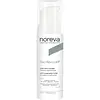What's inside
What's inside
 Key Ingredients
Key Ingredients

 Benefits
Benefits

 Concerns
Concerns

No concerns
 Ingredients Side-by-side
Ingredients Side-by-side

Water
Skin ConditioningPropanediol
SolventButylene Glycol
HumectantDiglycerin
HumectantGlycerin
Humectant1,2-Hexanediol
Skin ConditioningAscorbyl Glucoside
Antioxidant3-O-Ethyl Ascorbic Acid
Skin ConditioningPolysorbate 20
EmulsifyingSodium Citrate
BufferingXanthan Gum
EmulsifyingSodium Hydroxide
BufferingDipotassium Glycyrrhizate
HumectantNiacinamide
SmoothingMaltodextrin
AbsorbentCitric Acid
BufferingSucrose Dilaurate
EmollientSodium Cocoyl Glutamate
CleansingPisum Sativum Extract
Skin ConditioningWater, Propanediol, Butylene Glycol, Diglycerin, Glycerin, 1,2-Hexanediol, Ascorbyl Glucoside, 3-O-Ethyl Ascorbic Acid, Polysorbate 20, Sodium Citrate, Xanthan Gum, Sodium Hydroxide, Dipotassium Glycyrrhizate, Niacinamide, Maltodextrin, Citric Acid, Sucrose Dilaurate, Sodium Cocoyl Glutamate, Pisum Sativum Extract
Water
Skin ConditioningGlycerin
HumectantPropanediol
SolventAcetyl Glycyl Beta-Alanine
Skin ConditioningCellulose Gum
Emulsion Stabilising1,2-Hexanediol
Skin ConditioningCaprylyl Glycol
EmollientDisodium EDTA
Sodium Hydroxide
BufferingChlorphenesin
AntimicrobialPolydatin Glucoside
AntioxidantSodium Chloride
MaskingSodium Glycolate
BufferingTetrapeptide-30
Skin ConditioningLactic Acid/Glycolic Acid Copolymer
Skin ConditioningPalmitoyl Sh-Octapeptide-24 Amide
Skin ConditioningPolyvinyl Alcohol
Palmitoyl Tripeptide-5
Skin ConditioningPalmitoyl Sh-Tripeptide-5 Norisoleucyl Sh-Nonapeptide-1
Skin ConditioningWater, Glycerin, Propanediol, Acetyl Glycyl Beta-Alanine, Cellulose Gum, 1,2-Hexanediol, Caprylyl Glycol, Disodium EDTA, Sodium Hydroxide, Chlorphenesin, Polydatin Glucoside, Sodium Chloride, Sodium Glycolate, Tetrapeptide-30, Lactic Acid/Glycolic Acid Copolymer, Palmitoyl Sh-Octapeptide-24 Amide, Polyvinyl Alcohol, Palmitoyl Tripeptide-5, Palmitoyl Sh-Tripeptide-5 Norisoleucyl Sh-Nonapeptide-1
 Reviews
Reviews

Ingredients Explained
These ingredients are found in both products.
Ingredients higher up in an ingredient list are typically present in a larger amount.
1,2-Hexanediol is a synthetic liquid and another multi-functional powerhouse.
It is a:
- Humectant, drawing moisture into the skin
- Emollient, helping to soften skin
- Solvent, dispersing and stabilizing formulas
- Preservative booster, enhancing the antimicrobial activity of other preservatives
Glycerin is already naturally found in your skin. It helps moisturize and protect your skin.
A study from 2016 found glycerin to be more effective as a humectant than AHAs and hyaluronic acid.
As a humectant, it helps the skin stay hydrated by pulling moisture to your skin. The low molecular weight of glycerin allows it to pull moisture into the deeper layers of your skin.
Hydrated skin improves your skin barrier; Your skin barrier helps protect against irritants and bacteria.
Glycerin has also been found to have antimicrobial and antiviral properties. Due to these properties, glycerin is often used in wound and burn treatments.
In cosmetics, glycerin is usually derived from plants such as soybean or palm. However, it can also be sourced from animals, such as tallow or animal fat.
This ingredient is organic, colorless, odorless, and non-toxic.
Glycerin is the name for this ingredient in American English. British English uses Glycerol/Glycerine.
Learn more about GlycerinPropanediol is an all-star ingredient. It softens, hydrates, and smooths the skin.
It’s often used to:
Propanediol is not likely to cause sensitivity and considered safe to use. It is derived from corn or petroleum with a clear color and no scent.
Learn more about PropanediolSodium Hydroxide is also known as lye or caustic soda. It is used to adjust the pH of products; many ingredients require a specific pH to be effective.
In small amounts, sodium hydroxide is considered safe to use. However, large amounts may cause chemical burns due to its high alkaline.
Your skin has a natural pH and acid mantle. This acid mantle helps prevent harmful bacteria from breaking through. The acid mantle also helps keep your skin hydrated.
"Alkaline" refers to a high pH level. A low pH level would be considered acidic.
Learn more about Sodium HydroxideWater. It's the most common cosmetic ingredient of all. You'll usually see it at the top of ingredient lists, meaning that it makes up the largest part of the product.
So why is it so popular? Water most often acts as a solvent - this means that it helps dissolve other ingredients into the formulation.
You'll also recognize water as that liquid we all need to stay alive. If you see this, drink a glass of water. Stay hydrated!
Learn more about Water